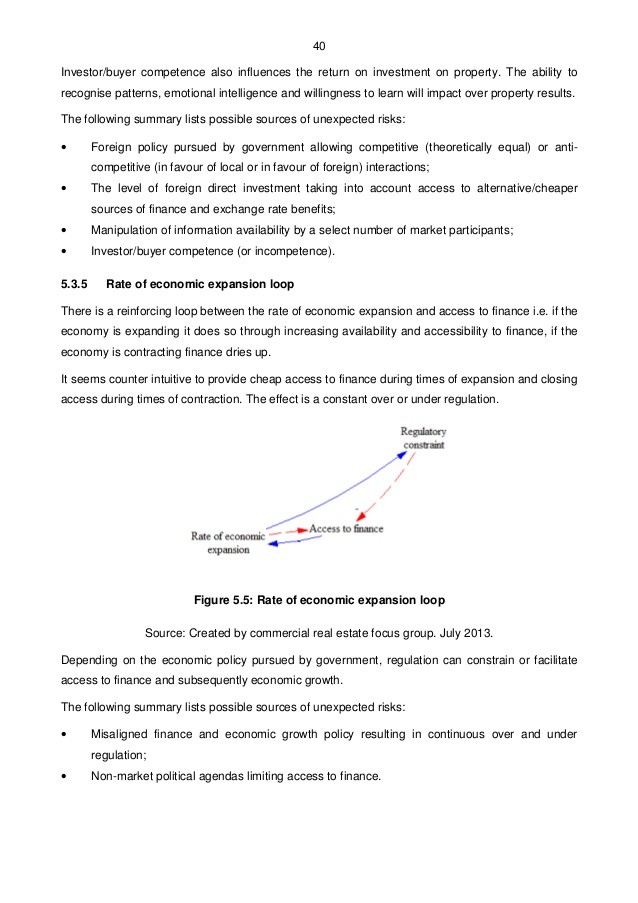How to Calculate a Commercial Real Estate Investment Return (ROI)
Post on: 1 Июнь, 2015 No Comment

By Michael Shelton
The search for a successful commercial real estate investment has one objective; to create the greatest return on the capital invested. The real estate executive must have the ability to make and interpret financial calculations to determine the investment return. You may have sophisticated financial modeling tools and a crack team of analysts to do the work or you might be on your own with a simple spreadsheet. Either way you need a basic understanding of how to calculate commercial real estate investment returns.
There are three primary methods of evaluating the financial return of a commercial real estate investment. You can look at a static or pro forma return on investment (ROI). an internal rate of return (IRR) or the net present value (NPV) of an investment. Actually, you can use all three methods to have a more complete financial picture. Many times these are used with a 10-year or longer cash flow projection and some sort of discounted cash flow analysis. There are other less useful but widely used methods to evaluate the return on an investment such as calculating the payback period. This article will look at the three most useful methods previously mentioned.
Pro Forma Return on Investment (ROI)
The easiest and most common method to evaluate commercial real estate is by calculating a static pro forma return on investment (ROI). The word pro forma comes from the sixteenth century Latin word meaning as a matter of form. The pro forma return calculation looks at what will be when the investment is fully operational or stabilized. This calculation ignores the planned development and lease-up period for the investment property but takes into account any operating capacity slack at stabilization. Time value of money is not a consideration in the pro forma ROI calculation. In other words, if it takes several years after you make the investment to begin generating cash flow there is no discount for the delay in investment return. Time value of money is a financial principle that a dollar today is worth more than a dollar tomorrow due to expected or realized inflation. To calculate a static ROI simply take the expected stabilized net operating income divided by the expected costs to acquire and improve the investment. You can evaluate competing commercial real estate investment opportunities using ROI because all the calculations are made using dollars at todays value.
Internal Rate of Return (IRR)
The Internal Rate of Return (IRR) calculation takes into account the time value of money. As mentioned above, time value of money is a financial principle that a dollar today is worth more than a dollar tomorrow due to expected or realized inflation. In other words the longer you have to wait for an investment to return a dollar the less it is worth to you today. The IRR calculation takes a series of commercial real estate cash inflows and outflows and returns the average annual rate of return over the investment period to yield a zero net present value (NPV, see below). For example, an investment that has a ten-year time horizon might return a 10% IRR which is the average annual return of the investment. Some years the return will be higher and some years it will be lower. IRR is useful for comparing strategic investments that have the same time horizon but different planned cash flow streams. It also provides clarity because it discounts future cash flow.
Net Present Value (NPV) and Discounted Cash Flow (DCF)
Net Present Value (NPV) is the cousin of IRR. The differences are with IRR you solve for the average annual return to get a zero NPV while the NPV calculation shows the value in todays dollars from a series of future investment flows. You need to determine the annual discount rate to solve for the net present value for your investment opportunity. This involves substantial guesswork and is prone to error so be careful when selecting the discount rate to apply to future cash flows. Ten-year commercial real estate cash flow projections use this form of discounted cash flow analysis to arrive at a current value. Commercial real estate appraisers often used this method to determine value.
Commercial Real Estate Loans
The last word is about positive and negative leverage. You should evaluate a real estate investment on an un-leveraged basis first, that is before considering any debt financing. Real estate Loans add an extra layer of complexity with multiple variables subject to market forces outside of your control. An investment that has a rate of return greater than the expected loan interest rate generates positive leverage. If the return on investment is less than the loan rate then you have a negative leverage situation. Leverage is a double-edged sword with a positive edge that will help you conquer your real estate goals and a negative edge that will hack your company to pieces.
Choose carefully from among your real estate investment options during your financial planning process. You have a finite amount of disposable cash for growth opportunities. Your strategic investment plan should include a calculation of return on investment (ROI), net present value (NPV), and internal rate of return (IRR) for each real estate opportunity.
Michael Shelton is the owner and chief coach of Shelton Business Services, LLC providing executive coaching, management consulting and financial services.
Cash Flow Rich, Winning Ways to Evaluate and Finance Real Estate
Learn how to evaluate real estate investments using sound fundamental analysis in my book, available on Amazon.com














